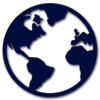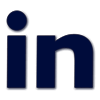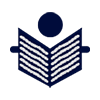
Only Regulatory Products (API/FDF), Drugs in Developments and News are Updated on this Virtual Booth
Update your Virtual Booth on PharmaCompass, ask us ![]()
About
CPhI WW FrankfurtCPhI WW Frankfurt
Not Confirmed
Not Confirmed
28-30 October, 2025
Not Confirmed
Not Confirmed
19-22 October, 2025
Not Confirmed
Not Confirmed
20-22 October, 2025
List your booth number for exhibitions, ask us
CONTACT DETAILS






Upload your Marketing & Sales content on your company Virtual Booth, click HERE.
Events
Webinars & Exhibitions
CPhI WW FrankfurtCPhI WW Frankfurt
Industry Trade Show
Not Confirmed
28-30 October, 2025
Industry Trade Show
Not Confirmed
19-22 October, 2025
Industry Trade Show
Not Confirmed
20-22 October, 2025
Digital content

INTERVIEW #SpeakPharma
[Sponsored by another company]https://www.pharmacompass.com/speak-pharma/we-are-building-capabilities-to-stay-ahead-of-the-curve-and-align-with-future-needs-of-global-healthcare
VLOG #PharmaReel
[Sponsored by another company]DATA COMPILATION #PharmaFlow
[Sponsored by another company]https://www.pharmacompass.com/radio-compass-blog/cdmo-activity-tracker-veranova-chemexpress-invest-in-adc-facilities-cohance-to-set-up-oligonucleotide-facility-in-india

07 Oct 2025
// FIERCE PHARMA
https://www.fiercepharma.com/marketing/novartis-survey-shines-light-hidden-realities-womens-conversations-about-breast-health

01 Oct 2025
// REUTERS
https://www.reuters.com/business/healthcare-pharmaceuticals/us-fda-approves-novartis-drug-skin-disease-2025-09-30/

30 Sep 2025
// FIERCE PHARMA
https://www.fiercepharma.com/marketing/novartis-earns-fdas-ire-misleading-romantic-storyline-fabhalta-tv-ad

29 Sep 2025
// GLOBENEWSWIRE
https://www.globenewswire.com/news-release/2025/09/29/3157703/0/en/Novartis-to-launch-Direct-to-Patient-platform-for-Cosentyx-secukinumab-in-the-US.html

29 Sep 2025
// GLOBENEWSWIRE
https://www.globenewswire.com/news-release/2025/09/29/3157623/0/en/Novartis-announces-commencement-of-tender-offer-to-acquire-Tourmaline-Bio.html

29 Sep 2025
// FIERCE PHARMA
https://www.fiercepharma.com/marketing/novartis-boehringer-dtc-platforms-slash-prices-cosentyx-spiriva-respimat
Excipients
REF. STANDARDS & IMPURITIES

Inspections and registrations

ABOUT THIS PAGE
Novartis Pharmaceuticals Corporation is a supplier offers 69 products (APIs, Excipients or Intermediates).
Find a price of Pentetreotide bulk with DMF, JDMF offered by Novartis Pharmaceuticals Corporation
Find a price of Valsartan bulk with DMF, CEP offered by Novartis Pharmaceuticals Corporation
Find a price of Amlodipine Besylate bulk with CEP offered by Novartis Pharmaceuticals Corporation
Find a price of Baclofen bulk with DMF offered by Novartis Pharmaceuticals Corporation
Find a price of Cyclosporine bulk with JDMF offered by Novartis Pharmaceuticals Corporation
Find a price of Fluvastatin bulk with DMF offered by Novartis Pharmaceuticals Corporation
Find a price of Glycolide - lactide copolymer bulk with DMF offered by Novartis Pharmaceuticals Corporation
Find a price of Letrozole bulk with CEP offered by Novartis Pharmaceuticals Corporation
Find a price of NAFTIFINE HCL bulk with DMF offered by Novartis Pharmaceuticals Corporation
Find a price of Terbinafine bulk with DMF offered by Novartis Pharmaceuticals Corporation
Find a price of Topotecan Hydrochloride bulk with DMF offered by Novartis Pharmaceuticals Corporation
Find a price of Benzonatate bulk offered by Novartis Pharmaceuticals Corporation
Find a price of Bisoctrizole bulk offered by Novartis Pharmaceuticals Corporation
Find a price of Chlorthalidone bulk offered by Novartis Pharmaceuticals Corporation
Find a price of Clofazimine bulk offered by Novartis Pharmaceuticals Corporation
Find a price of Clomipramine Hydrochloride bulk offered by Novartis Pharmaceuticals Corporation
Find a price of Edotreotide bulk offered by Novartis Pharmaceuticals Corporation
Find a price of Eudragit Rs bulk offered by Novartis Pharmaceuticals Corporation
Find a price of Methylphenidate Hydrochloride bulk offered by Novartis Pharmaceuticals Corporation
Find a price of Naphazoline Hydrochloride bulk offered by Novartis Pharmaceuticals Corporation
Find a price of Pyrilamine bulk offered by Novartis Pharmaceuticals Corporation
Find a price of Pyrilamine Maleate bulk offered by Novartis Pharmaceuticals Corporation
Find a price of Rifampicin bulk offered by Novartis Pharmaceuticals Corporation
Find a price of Thurfyl Nicotinate bulk offered by Novartis Pharmaceuticals Corporation
Find a price of STARTING MATERIALS 1 & 3, IN NEW JERSEY AND SWITZERLAND bulk offered by Novartis Pharmaceuticals Corporation
Find a price of CGP LL637 ADJUVANT--CHEMISTRY & GMP bulk offered by Novartis Pharmaceuticals Corporation
Find a price of PULMOSPHERE(R) PLACEBO INHALATION POWDER bulk offered by Novartis Pharmaceuticals Corporation
Find a price of MANUFACTURING SITE, FACILITIES, PERSONNEL AND OPERATING PROCEDURES IN STEIN, SWITZERLAND. bulk offered by Novartis Pharmaceuticals Corporation
Find a price of TESSALON DRUG SUBSTANCE bulk offered by Novartis Pharmaceuticals Corporation
Find a price of CGP 17,582B bulk offered by Novartis Pharmaceuticals Corporation
Find a price of PERSONNEL, FACILS & GEN OPERATING PROCEDURES AT EAST HANOVER, NJ. bulk offered by Novartis Pharmaceuticals Corporation
Find a price of 2(2'-HYDROXY-5-METHYLPHENYL) BENZOTRIAZOLE bulk offered by Novartis Pharmaceuticals Corporation
Find a price of MANUFACTURING SITE, FACILITIES, PERSONNEL, AND GENERAL OPERATING PROCEDURE IN ORLEANS-LA SOURCE, FRANCE. bulk offered by Novartis Pharmaceuticals Corporation
Find a price of MANUFACTURING SITE, FACILITIES, PERSONNEL, AND GENERAL OPERATING PROCEDURES IN GRIMSBY, UK bulk offered by Novartis Pharmaceuticals Corporation
Find a price of ADJUVANT CGP 11637:TOXICITY STUDIES & RESULTS CONDUCTED IN EUROPEAN FA bulk offered by Novartis Pharmaceuticals Corporation
Find a price of PULMONARY DRUG DELIVERY SYSTEM (PDDS) CLINICAL bulk offered by Novartis Pharmaceuticals Corporation
Find a price of TINUVIN 326 bulk offered by Novartis Pharmaceuticals Corporation
Find a price of FACILITY AND OPERATING PROCEDURES IN DORVAL, QUEBEC, CANADA bulk offered by Novartis Pharmaceuticals Corporation
Find a price of Alpelisib bulk offered by Novartis Pharmaceuticals Corporation
Find a price of Asciminib bulk offered by Novartis Pharmaceuticals Corporation
Find a price of Atorvastatin bulk offered by Novartis Pharmaceuticals Corporation
Find a price of Dabrafenib Mesylate bulk offered by Novartis Pharmaceuticals Corporation
Find a price of Deferasirox bulk offered by Novartis Pharmaceuticals Corporation
Find a price of Diclofenac Diethylamine bulk offered by Novartis Pharmaceuticals Corporation
Find a price of Everolimus bulk offered by Novartis Pharmaceuticals Corporation
Find a price of Fingolimod Hydrochloride bulk offered by Novartis Pharmaceuticals Corporation
Find a price of Fluvastatin Sodium bulk offered by Novartis Pharmaceuticals Corporation
Find a price of Hydrochlorothiazide bulk offered by Novartis Pharmaceuticals Corporation
Find a price of Imatinib Mesylate bulk offered by Novartis Pharmaceuticals Corporation
Find a price of Indacaterol Maleate bulk offered by Novartis Pharmaceuticals Corporation
Find a price of Iptacopan Hydrochloride bulk offered by Novartis Pharmaceuticals Corporation
Find a price of Ketotifen Fumarate bulk offered by Novartis Pharmaceuticals Corporation
Find a price of Lithium Carbonate bulk offered by Novartis Pharmaceuticals Corporation
Find a price of Mycophenolate Mofetil bulk offered by Novartis Pharmaceuticals Corporation
Find a price of Mycophenolate Sodium bulk offered by Novartis Pharmaceuticals Corporation
Find a price of Nilotinib bulk offered by Novartis Pharmaceuticals Corporation
Find a price of Osilodrostat Phosphate bulk offered by Novartis Pharmaceuticals Corporation
Find a price of Oxcarbazepine bulk offered by Novartis Pharmaceuticals Corporation
Find a price of Pimecrolimus bulk offered by Novartis Pharmaceuticals Corporation
Find a price of Ribociclib bulk offered by Novartis Pharmaceuticals Corporation
Find a price of Rivastigmine bulk offered by Novartis Pharmaceuticals Corporation
Find a price of Rivastigmine Tartrate bulk offered by Novartis Pharmaceuticals Corporation
Find a price of Tacrolimus bulk offered by Novartis Pharmaceuticals Corporation
Find a price of Terbinafine Hydrochloride bulk offered by Novartis Pharmaceuticals Corporation
Find a price of Trametinib bulk offered by Novartis Pharmaceuticals Corporation
Find a price of Valsartan bulk offered by Novartis Pharmaceuticals Corporation
Find a price of Vildagliptin bulk offered by Novartis Pharmaceuticals Corporation
Find a price of Asiminib hydrochloride bulk offered by Novartis Pharmaceuticals Corporation
Find a price of Sacubitril·valsartan sodium hydrochloride bulk offered by Novartis Pharmaceuticals Corporation
